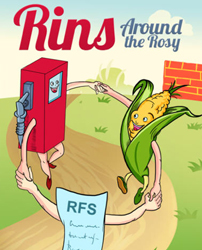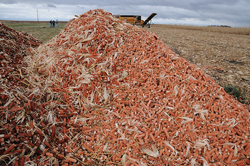A new video offers solutions to the threat oil poses for America’s armed forces and the nation’s security. The video was developed by the Union of Concerned Scientists (UCS) and the Truman National Security Project. The new video details the growing danger of oil use to the country’s national security. The U.S. Department of Defense is the world’s largest institutional oil consumer, using more than 100 million barrels every year to power ships, vehicles, aircraft, and ground operations. That’s enough oil to drive around the Earth more than 4 million times. According to the two organizations, this high use leads to greater unpredictability for missions, especially given oil’s vulnerability to price swings on the world market.
“Moving fuel on the battlefield is dangerous and expensive,” said Michael Breen, a former Army captain and executive director at Truman. “A ten dollar increase in the price of a barrel of oil costs the military $1.3 billion — money we can’t use to accomplish our mission and protect our troops.”
The groups argue that despite oil industry advertising championing new domestic production, so called “new oil and gas” resources aren’t really new at all. And they are only available because the oil industry is now desperate enough to go after dirtier, more difficult and expensive oil than they were before. They they said is neither a sustainable solution for our armed forces or our country.
“As the era of cheap and easy oil comes to an end, the oil industry’s desperation for continuing profits has led to more and more destructive practices that are not solving the problems associated with oil use, ” said Siv Balachandran, an engineer and oil analyst at UCS. “The real solution is to use less oil.”
” said Siv Balachandran, an engineer and oil analyst at UCS. “The real solution is to use less oil.”
Balachandran and Breen noted that the armed forces are adopting new, innovative technologies to reduce oil use while creating a stronger, more effective fighting force. For example, the Navy uses biofuels made from algae and other advanced sources, while the Army is powering Humvees with hybrid-electric engines. These technologies could benefit civilians too.
“The country is already making progress on this front, with federal and state policies helping cars go farther on each gallon of gas and putting thousands of hybrid and electric vehicles on the road — saving the country money while reducing emissions and creating jobs, but the work is not done,” said Balachandran. “By supporting policies that cut oil use even further, we’ll keep America healthier, wealthier, and more secure.”
Breen added, “As the largest institutional consumer of fuel in the world, the U.S. military is leading the way in reducing oil use and investing in renewable options. That’s good for America’s budget and for national security. Our communities – the veterans and national security leaders of Operation Free, and the scientists of UCS – are united in supporting the military’s innovative clean energy solutions.”
 In addition to the final rule approving crop residue as a cellulosic feedstock, the Environmental Protection Agency yesterday established a “voluntary quality assurance program” for renewable identification numbers, or RINs.
In addition to the final rule approving crop residue as a cellulosic feedstock, the Environmental Protection Agency yesterday established a “voluntary quality assurance program” for renewable identification numbers, or RINs.









 ” said Siv Balachandran, an engineer and oil analyst at UCS. “The real solution is to use less oil.”
” said Siv Balachandran, an engineer and oil analyst at UCS. “The real solution is to use less oil.”

 e available on the market in Japan by 2016. The Saga City facility will be designed based on Heliae’s first algae production facility in Gilbert, Arizona. This original facility has been operational since 2013 and produces astaxanthin for the North American market.
e available on the market in Japan by 2016. The Saga City facility will be designed based on Heliae’s first algae production facility in Gilbert, Arizona. This original facility has been operational since 2013 and produces astaxanthin for the North American market.